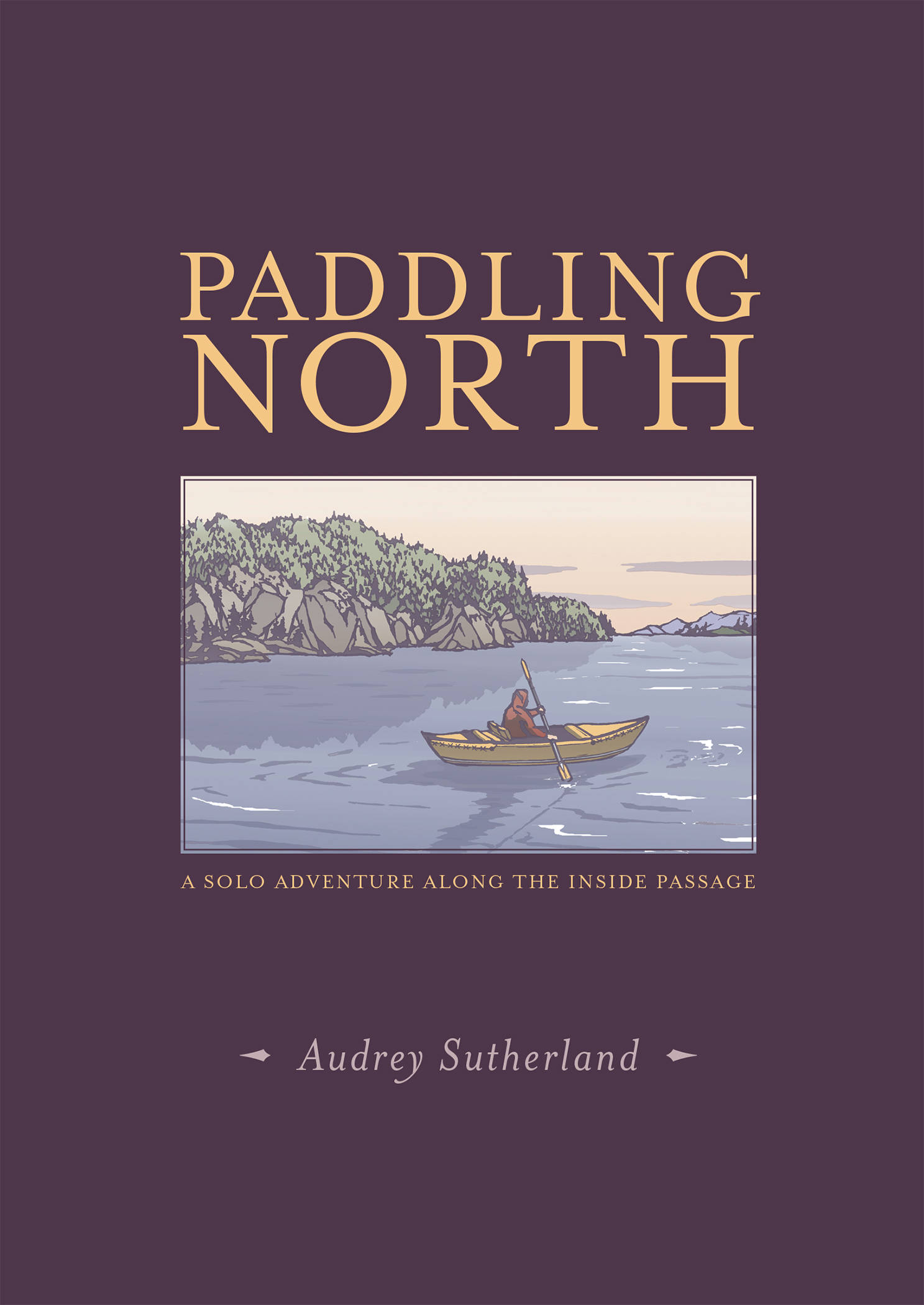Like her unorthodox inflatable kayak, Audrey Sutherland preferred the wild.
“The hazards for an inflatable canoe are greater in occupied places,” she writes in her Alaska travel memoir “Paddling North,” out in paperback July 31. “The docks have nails, frayed rusty cables are just under the surface, and jagged metal pipes lie on the bottom in shallow water. The barnacles and rocks of uninhabited shores are more predictable.”
Filled with love for Alaska’s Inside Passage, Sutherland plied the waters of the Alexander Archipelago for 24 summers, paddling over 8,000 miles, all while over the age of 60.
“Paddling North” (Patagonia Works) recounts the first of those expeditions, taken in 1981 after Sutherland quit her job as a school counselor in Hawaii. Starting in Ketchikan, she paddled around Revillagigedo Island, across to Prince of Wales Island and up to Hollis and Craig.
Sutherland continued on the water to Kake, where she crossed to Baranof Island, then to the outside of Chichagof Island. She ended up in Skagway via Icy Strait, Chatham Strait and Lynn Canal.
The paperback edition comes three years after Sutherland’s death in 2015 at age 94, and six years after the release of the hardcover edition.
By all accounts, Sutherland was a badass. Her paddling career spanned five decades and an estimated 12,000 nautical miles. She lived by the mantra: “go solo, go light, go now.”
Juneau paddling guide Ken Leghorn, deceased, recounted crossing paths with her during her first expedition in an anecdote to Hawaii media before the release of “Paddling North.”
Leghorn had spotted a lone paddler in an inflatable kayak in the Gulf of Alaska during an expedition around Chichagof Island in 1981. Sutherland didn’t have a proper spray skirt to keep her dry and was being half blown across the sea.
When Leghorn got closer, he noticed the soaked paddler was singing to herself.
““My first reaction was, ‘This is a crazy person,’” Leghorn told Hawaii reporter David Thompson. “I thought it must be somebody who was totally unprepared to be out there. Then I found out it was somebody who has more long-distance sea kayaking experience than I’ll ever have.”
“Paddling North” brings readers into the mind of an inveterate adventurer, one who preferred the company of gulls and gales over anything else. Sutherland kept copious notes of her journeys. The memoir recounts the trip through details taken from Sutherland’s journals, interspersed with maps, recipes from Sutherland and color paintings by artist Yoshiko Yamamoto.
Short, declarative sentences and species-specific nature writing pace the book. The mind wanders with so much “autopilot” time paddling, Sutherland writes, and the odd musing on the narrator’s past — the raising of her four children, her divorce from a California commercial fisherman, her childhood — offer a personal touch that elevates the adventure narrative.
Sutherland’s mind is always working, guessing the wind speed, planning the next launch into the surf, or calculating how many miles she’d have to go to find shelter. She seems to relish the minute detail necessary to pull off such an expedition by oneself.
Readers spend much of “Paddling North” inside Sutherland’s decision-making process: Camp here or keep paddling? Build a fire or get some sleep? Southeast’s deadly water and terrain pose such a threat, one feels the needs of survival tax Sutherland’s knowledge as much as the long days paddling taxed her muscles.
An overnight in a Forest Service cabin or a stop in a resupply town provide respite for Sutherland and reader alike. It’s these spare moments of comfort and reflection that Sutherland is at her best in “Paddling North.”
• Contact reporter Kevin Gullufsen at 523-2228 and kgullufsen@juneauempire.com. Follow him on Twitter at @KevinGullufsen.

